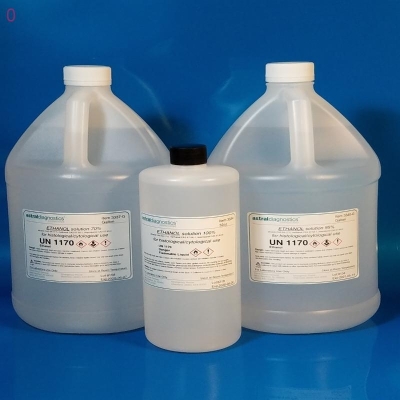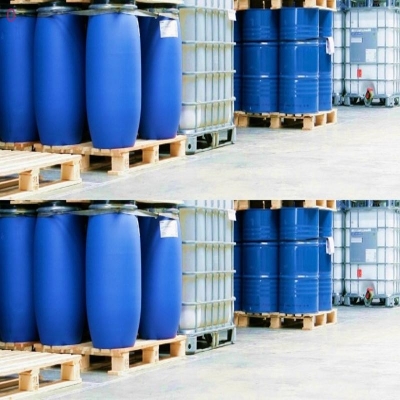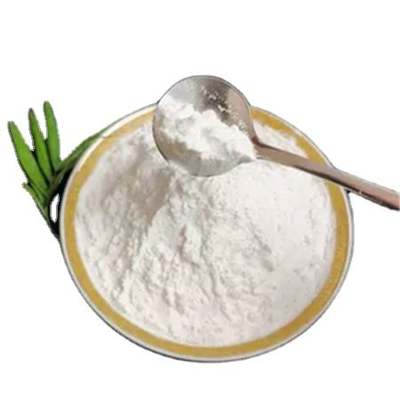-
Categories
-
Pharmaceutical Intermediates
-
Active Pharmaceutical Ingredients
-
Food Additives
- Industrial Coatings
- Agrochemicals
- Dyes and Pigments
- Surfactant
- Flavors and Fragrances
- Chemical Reagents
- Catalyst and Auxiliary
- Natural Products
- Inorganic Chemistry
-
Organic Chemistry
-
Biochemical Engineering
- Analytical Chemistry
- Cosmetic Ingredient
-
Pharmaceutical Intermediates
Promotion
ECHEMI Mall
Wholesale
Weekly Price
Exhibition
News
-
Trade Service
【Chemical Machinery Equipment Network Hot Focus ] "Plastic looks cheap, but the price behind it is very high.
" From 1950 to 2015, a total of 83 billion tons of primary plastic products were produced, of which 49 billion tons have been discarded.
These plastics thrown away by their owners not only occupy a lot of space on the earth, but are also ubiquitous in the atmosphere, water bodies, and soil.
As a country with a large amount of plastic production and use in the world, the challenges facing China are particularly severe.
Especially in recent years, with the rapid development of food delivery, express delivery and other industries, the increase in plastic waste has been significant, and the pressure caused is very prominent.
Hot attention of Chemical Machinery Equipment NetworkChemical machinery and equipment" From 1950 to 2015, a total of 83 billion tons of primary plastic products were produced, of which 49 billion tons have been discarded.
These plastics thrown away by their owners not only occupy a lot of space on the earth, but are also ubiquitous in the atmosphere, water bodies, and soil.
As a country with a large amount of plastic production and use in the world, the challenges facing China are particularly severe.
Especially in recent years, with the rapid development of food delivery, express delivery and other industries, the increase in plastic waste has been significant, and the pressure caused is very prominent.
Humans will "pay the bill" for plastic waste pollution
Humans will "pay the bill" for plastic waste pollutionIn the marine environmental status bulletin released by *, whether it is floating garbage on the sea, beach garbage or seabed garbage, there are many plastic garbage such as plastic bags and plastic bottles, accounting for 77.
5%-88.
7% of marine garbage.
The main producers of plastic waste are human beings.
After monitoring the waste in 57 areas, my country found that the areas with higher density of marine waste are mainly distributed in tourism and recreation areas, ports and shipping, and adjacent sea areas.
Among them, especially the beach areas where human activities are intensive, the average number and average density of garbage are higher than other areas.
5%-88.
7% of marine garbage.
The main producers of plastic waste are human beings.
After monitoring the waste in 57 areas, my country found that the areas with higher density of marine waste are mainly distributed in tourism and recreation areas, ports and shipping, and adjacent sea areas.
Among them, especially the beach areas where human activities are intensive, the average number and average density of garbage are higher than other areas.
When the microplastics are further decomposed into smaller particles, they are likely to be absorbed by the human circulatory system, and then enter the human organs.
In addition, these plastics may contain some chemicals in the manufacturing process, which can damage or even kill cells.
Cells may be successfully replaced, or they may not.
Both protein and DNA may be damaged.
In addition, waste plastics will not only occupy a large amount of land with garbage, but the occupied land* will not be restored, which will affect the sustainable use of land.
Waste into domestic garbageIf plastic products are buried in landfills, they will not degrade for 200 years.
It is harmful to the land, changing its pH, affecting the absorption of nutrients and water by crops, resulting in reduced agricultural production.
As for plastic products discarded in water or on land, not only will it affect the environment, but if passively swallowed, it will lead to death.
plastic products In addition, these plastics may contain some chemicals in the manufacturing process, which can damage or even kill cells.
Cells may be successfully replaced, or they may not.
Both protein and DNA may be damaged.
In addition, waste plastics will not only occupy a large amount of land with garbage, but the occupied land* will not be restored, which will affect the sustainable use of land.
Waste into domestic garbageIf plastic products are buried in landfills, they will not degrade for 200 years.
It is harmful to the land, changing its pH, affecting the absorption of nutrients and water by crops, resulting in reduced agricultural production.
As for plastic products discarded in water or on land, not only will it affect the environment, but if passively swallowed, it will lead to death.
Control plastic pollution Monitoring instruments show magical powers
Control plastic pollution Monitoring instruments show magical powers Monitoring instrument
To study the impact of microplastics on the human body requires not only qualitative and quantitative analysis of microplastics, but also the detection of microplastic additives and adsorbed pollutants.
These are inseparable from professional and reliable scientific instruments.
At this stage, methods for detecting microplastics include Raman spectroscopy, infrared spectroscopy imaging, and thermal pyrolysis-GC/MS.
For chemical substances, additives and pollutants in microplastics, it can be combined with chromatography and mass spectrometry.
Atomic spectroscopy and other techniques for measurement.
The impact of microplastics on human health can also be analyzed using techniques such as mass spectrometry and cell analysis.
These are inseparable from professional and reliable scientific instruments.
At this stage, methods for detecting microplastics include Raman spectroscopy, infrared spectroscopy imaging, and thermal pyrolysis-GC/MS.
For chemical substances, additives and pollutants in microplastics, it can be combined with chromatography and mass spectrometry.
Atomic spectroscopy and other techniques for measurement.
The impact of microplastics on human health can also be analyzed using techniques such as mass spectrometry and cell analysis.
The editor learned that at present, the commonly used microplastics identification techniques are Fourier transform infrared spectroscopy and Raman spectroscopy.
However, the two can only analyze individual particles during the inspection process, and it is necessary to visually identify suspicious microplastic particles before performing spectral analysis.
The study of microplastics in environmental samples requires the analysis of a large number of particles, which leads to a lot of time-consuming detection.
However, the two can only analyze individual particles during the inspection process, and it is necessary to visually identify suspicious microplastic particles before performing spectral analysis.
The study of microplastics in environmental samples requires the analysis of a large number of particles, which leads to a lot of time-consuming detection.
Hyperspectral imaging technology combines the traditional two-dimensional RGB image with spectroscopy, and determines the chemical properties of the substance represented by each pixel by linking the spectral characteristics of each spatial pixel on the image with the corresponding spatial information.
Complete the detailed detection and classification of different samples.
Compared with Fourier transform infrared spectroscopy and Raman spectroscopy, hyperspectral imaging technology can perform spectral analysis on a large number of samples at the same time, which* improves the detection efficiency, and can obtain other information such as the size, shape and abundance of microplastics.
Complete the detailed detection and classification of different samples.
Compared with Fourier transform infrared spectroscopy and Raman spectroscopy, hyperspectral imaging technology can perform spectral analysis on a large number of samples at the same time, which* improves the detection efficiency, and can obtain other information such as the size, shape and abundance of microplastics.
With the development of science and technology, high-tech products are also used to monitor plastic environmental pollution, such as: researcher Lauren Bierman from the Plymouth Marine Laboratory in the United Kingdom and his colleagues according to the different wavelengths of visible light and infrared light absorbed and reflected by floating objects Using the data provided by the European Space Agency’s “Sentinel 2” satellite, a machine learning algorithm was trained to distinguish plastics from natural materials such as seaweed, wood, and foam.
Tests have shown that the average accuracy of this technology is 86%, and the local area is 100%.
The researchers said that this method is expected to be used in conjunction with drones or high-resolution satellites to monitor marine plastic debris.
Tests have shown that the average accuracy of this technology is 86%, and the local area is 100%.
The researchers said that this method is expected to be used in conjunction with drones or high-resolution satellites to monitor marine plastic debris.
Concluding remarks
Concluding remarks At present, plastic products are still inseparable from social development.
Fortunately, people are aware of the impact of plastics on the environment and the harm it brings to people and actively take preventive measures.
I hereby appeal to everyone to prevent and control plastic pollution.
Starting from every daily habit, the harm of plastic pollution is not far away, just around us.
I believe that with the joint efforts of people and the help of "technological magic", marine plastic waste will eventually disappear without a trace.
Fortunately, people are aware of the impact of plastics on the environment and the harm it brings to people and actively take preventive measures.
I hereby appeal to everyone to prevent and control plastic pollution.
Starting from every daily habit, the harm of plastic pollution is not far away, just around us.
I believe that with the joint efforts of people and the help of "technological magic", marine plastic waste will eventually disappear without a trace.
Original Title: Ocean Plastics Hazardous Spectroscopy Technology Comes to Save







